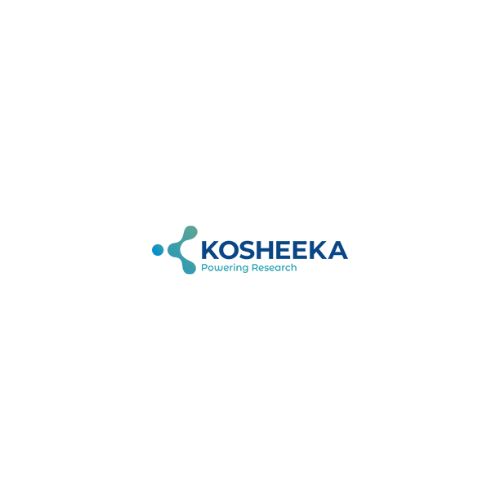
Kosheeka
Uploaded on Jul 15, 2024
Category
Health & Medicine
Exosome iolation from cell culture is a crucial step when trying to understand how intercellular communication is happening and the influence between the two. In this presentation, we look at the advantages and disadvantages of common exosome isolation methods from cell culture for different research purposes. To compare the isolated exosome preparation with a sample containing exosomes of interest, you can contact us at +919654321400 to procure a pure sample of exosomes isolated from human and preclinical animal cells. More info Visit: https://www.kosheeka.com/
Category
Health & Medicine
Exosome Isolation from Cell Culture Media
EXOSOME
ISOLATION FROM CELL
CULTURE MEDIA
Isolating the Nano-Wonder from Cell
Culture
EXOSOMES: THE
EXTRACELLULAR VESICLE
• Exosomes are the smallest extracellular vesicle,
with their size ranging from 30 nm to 150 nm.
• These are important communication mediators
for intercellular communication.
• Purity of the exosome sample is necessary to
elucidate its function and role.
• Exosomes also carry specific markers, making
them necessary for specific research studies and
targeted therapies.
www.kosheeka.com
HOW DO WE ISOLATE
EXOSOMES?
There are several methods to isolate
exosomes, including
• Precipitation
• Microfluidics
• Nanolithography
• Electro-deposition
• Immunomagnetic beads
• Covalent chemistry
• Ultra-centrifugation
• Size-exclusion Chromatogaphy
Source: PMID:
www.3k6o7s1h4e6e29ka.com
COMMON METHOD OF ISOLATION #1
PRECIPITATION
RATIONAL
Samples with exosomes are incubated with a
solution that changes their solubility or
sedimentation rate.
ADVANTAGES DISADVANTAGES
• High Yield of extracellular vesicles • Difficult toisolate specific type of
• High sample process rate exosomes
• Simple procedure • Can carry protein aggregares,
• Do not reuquire specialized equipment lipoproteins, and viruses
• Maintain vescile,s morphology and • Can be contaminated with
integrity precipitatiing polymer or chemical
www.kosheeka.com
COMMON METHOD OF ISOLATION #2
ULTRAFILTRATION
RATIONAL
The ultrafiltration process allows the sample solution to pass over
a semi-permeable membrane to allow exosomes of a specific size
to pass through while retaining others in the sample solution.
Tangential Flow
Ultrafiltration
ADVANTAGES DISADVANTAGES
• SImplified protocol • Some loss of sample in filtration
• Yields pure exosome samples • Clogging of the filter
• Multiple sample processing • Distortion in the exosome
• Concentrate exosome isolation from morphology
dilute samples • Contamination with protein
• Reduced filter clogging aggregates
Source: PMID:
www.3k2o2s0h61e1e6ka.com
COMMON METHOD OF ISOLATION #3
ULTRACENTRIFUGATION
RATIONAL
Samples undergo several rounds of centrifugation (100,000–
200,000 g) to remove cellular debris from the sample,
followed by diffential centrifugation to yield pure exosomes.
ADVANTAGES DISADVANTAGES
• Isolation from large volumes • Require an ultracentrifugation mean
• No added chemicals • Low yield
• Damage to exosomes at high speeds
• Sample viscosity impacts
sedimentaton
• Cannot scale up to multiple samples
Source: PMID:
www.3k5o0s8h78e0e6ka.com
COMMON METHOD OF ISOLATION #4
SIZE-EXCLUSION CHROMATOGRAPHY
RATIONAL
The exosomes are isolated based on their size as the sample passes through
a porous column (pore size 40–80 nm), and the exosomes are collected as
eluation.
ADVANTAGES DISADVANTAGES
• Highly reproducible • Restrict sample volumes
• Preserves the exosomes structure • Low resolution of similar sized
• Easily scalable and can work with molecules
multiple samples • One type of exosomesi processed at
• Efficient in segrating exosomes based a given time
on sizes
• Easy to customize to get exosomes of
desired size
www.kosheeka.com
CONCLUSION:
• Exosomes are crucial for intercellular
communication.
• Exosome isolation is challenging due to size and
heterogeneity.
• Methods for exosome isolation include:
⚬ Precipitation: simple, high yield, low purity
⚬ Ultrafiltration: efficient, prone to clogging
⚬ Ultracentrifugation: gold standard, laborious,
potentially damaging
⚬ Size-exclusion chromatography: high purity,
limited sample volume
• A combination of methods may be necessary.
www.kosheeka.com
THANK YOU
FOR ATTENTION
www.kosheeka.com
[email protected]
+91-96543-21400

Comments